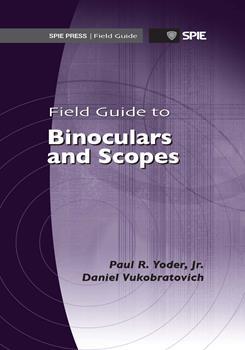|
Expand your knowledge of Optics in Optical Instruments by taking the SPIE course Introduction to Optomechanical Design, with instructor Daniel Vukobratovich. Click here to register. Modern binoculars and scopes meet a variety of user needs. This Field Guide provides readers with a concise, organized reference that explains the functions and configurations of instruments commonly used by bird watchers, hunters, amateur astronomers, and military and law-enforcement members. This book also addresses the rationale behind instrument design choices, with hardware examples illustrating specific arrangements and features. |
-
Journals
- Advanced Photonics
- Advanced Photonics Nexus
- Biophotonics Discovery
- Journal of Applied Remote Sensing
- Journal of Astronomical Telescopes, Instruments, and Systems
- Journal of Biomedical Optics
- Journal of Electronic Imaging
- Journal of Medical Imaging
- Journal of Micro/Nanopatterning, Materials, and Metrology
- Journal of Nanophotonics
- Journal of Optical Microsystems
- Journal of Photonics for Energy
- Neurophotonics
- Optical Engineering
- Photonics Insights
- Ebooks



